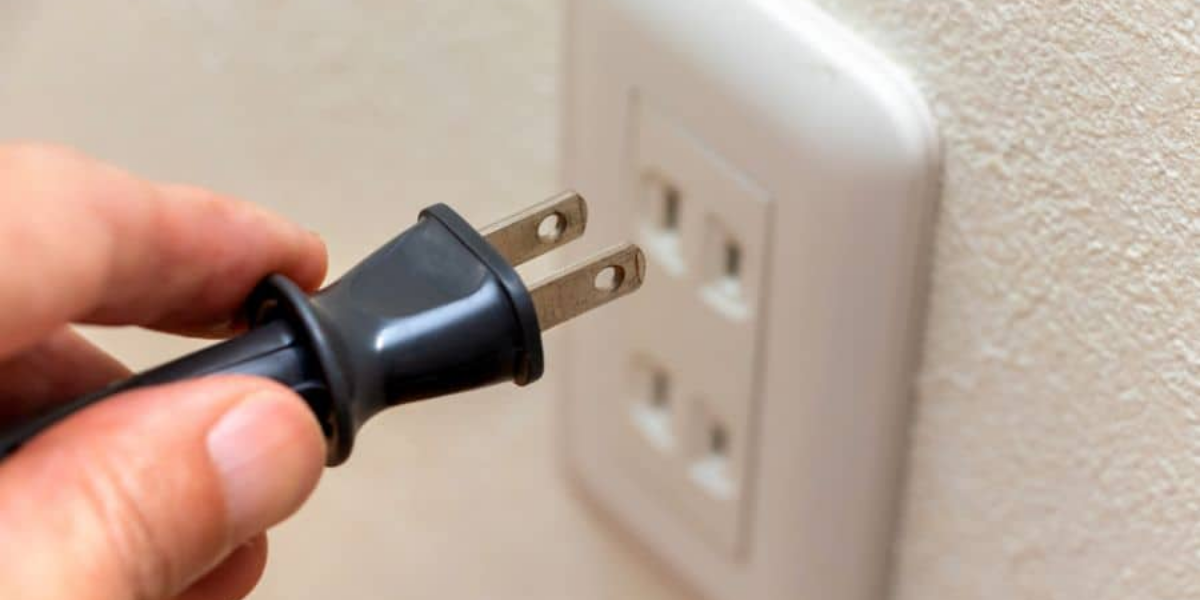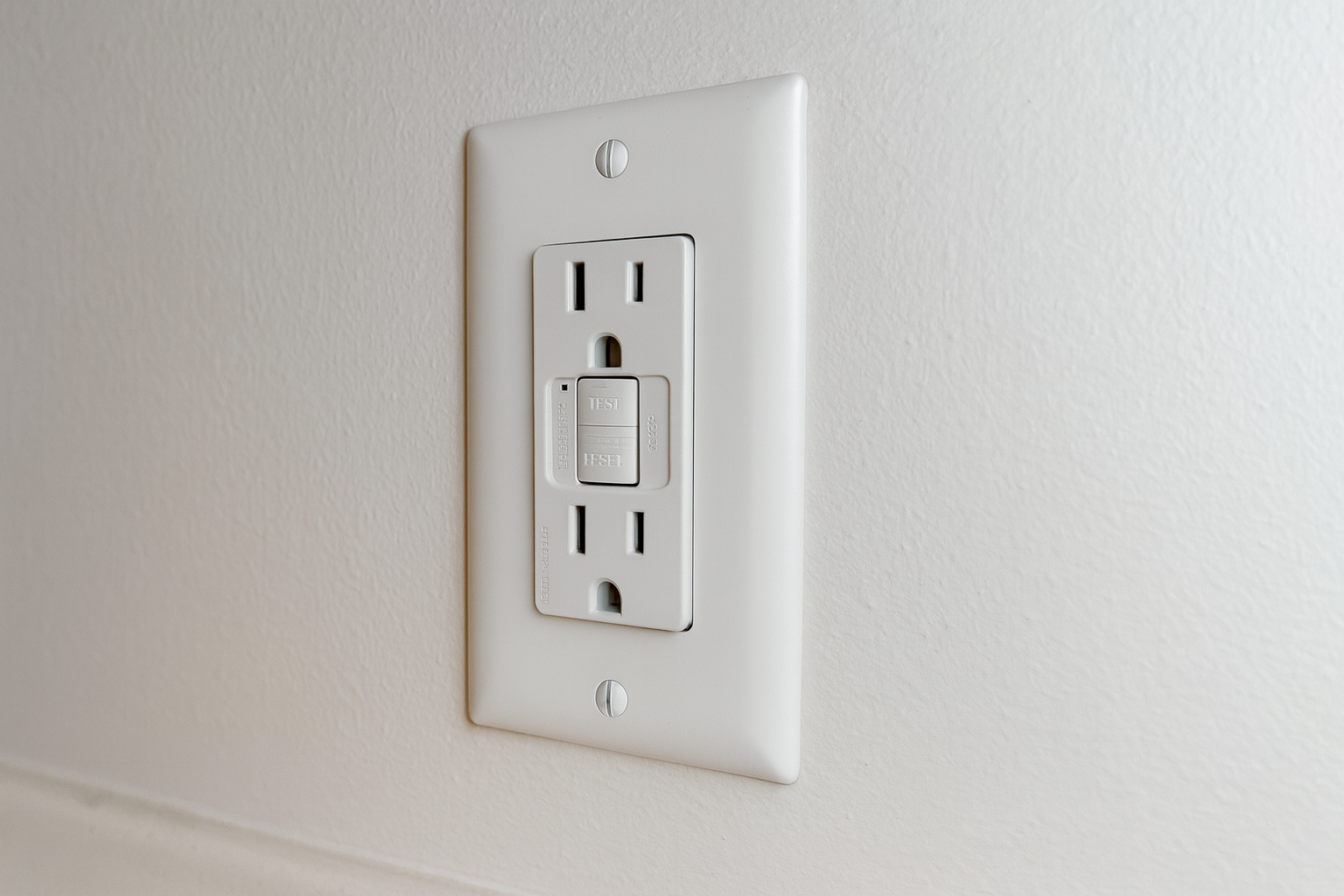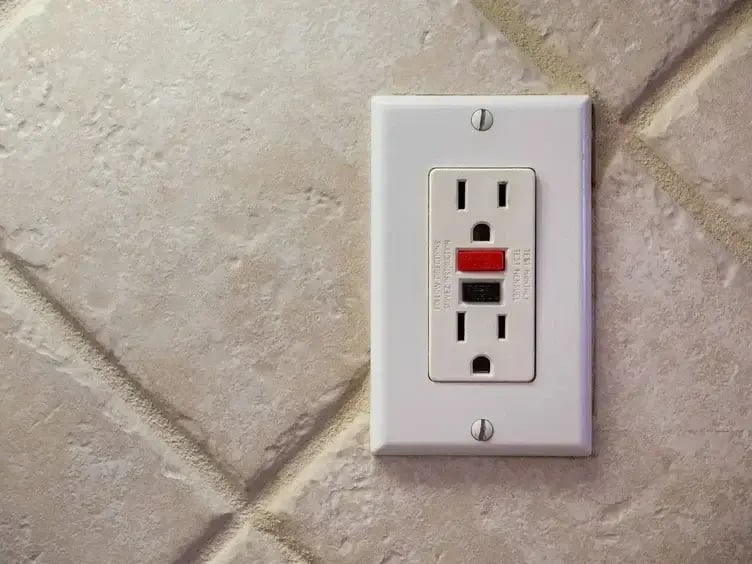The Top 5 Problems with Ungrounded Outlets and Why They Matter
October 28th, 2025
4 min read

Most homeowners don’t think twice about their outlets, until something goes wrong. But if your home still has ungrounded outlets, the risks run deeper than you might realize. A missing ground wire doesn’t just make your outlets “old-fashioned.” It creates real safety hazards that can lead to electric shocks, hidden fire risks, and problems during home inspections.
At Integra Electrical, we work on older Iowa homes every day. These homes were built in an era when two-prong outlets were the norm. But what was standard back then falls far short of today’s safety expectations. And here’s the hard truth: some electricians still take shortcuts or install outdated solutions that just don’t hold up. We’ve seen it firsthand. What looks like a small detail today can turn into a major safety issue tomorrow.
The top five problems with ungrounded outlets are:
- Electric shock risk
- Fire hazards
- Damage to your electronics and appliances
- Incompatibility with three-prong plugs
- Home inspection and insurance issues
What Does “Grounded” Mean?
A grounded outlet has a safe backup path for electricity to travel if something goes wrong. That’s what the round third hole is for, the ground prong. Instead of stray electricity running through you or your appliances, it’s sent safely into the earth.
Not sure if your outlets are grounded? The quickest way is to look: two slots only = ungrounded, two slots plus a round hole = grounded. For certainty, an inexpensive outlet tester can give you an answer in seconds, or an electrician can check the wiring behind the wall.
Electric Shock Risk
Ungrounded outlets don’t have a safe path for stray electricity. If a wire comes loose, a device malfunctions, or a fault happens inside the outlet, that extra energy looks for another way out. Too often, that path ends up being through you. Even a brief shock can be dangerous, especially in areas like kitchens, bathrooms, or basements where moisture increases the risk.
The solution is to give electricity a safer option than your body. Upgrading to grounded outlets or installing GFCI protection creates a direct path to ground, so if something goes wrong, power is cut off before anyone gets hurt. This one change can make some of the most accident-prone areas in your home much safer.
Fire Hazards from Faults or Surges
According to the National Fire Protection Association (NFPA), electrical failures are a leading cause of home fires in the U.S., accounting for around 13% of all structure fires. When a circuit is properly grounded, extra electricity has a clear, low-resistance path to follow. Without that path, any fault or power surge is trapped inside your home’s wiring. Over time, this can cause wires to overheat behind the wall, sometimes without any obvious warning signs. In older homes with aging insulation or cloth-covered wiring, the risk can be even higher.
Grounding gives that excess energy somewhere safe to go. By upgrading the circuit or adding protective devices, you reduce the chance of a fault turning into a hidden fire hazard. It’s one of the simplest ways to strengthen your home’s overall electrical safety.
Damage to Electronics and Appliances
Modern electronics rely on grounding to handle small electrical spikes that happen during normal use. Without a grounding path, those spikes have nowhere to go except into the devices themselves. Over time, this can wear down internal components, shorten the lifespan of appliances, or even fry your sensitive equipment like TVs, computers, or other home devices.
Many homeowners plug power strips with surge protection into ungrounded outlets thinking they’re covered, but without a ground, those devices can’t actually do their job. Surge protection works by redirecting excess electricity safely into the ground during a spike. If there’s no grounding path, there’s nowhere for that energy to go, so your electronics stay exposed.
Incompatibility with Three-Prong Plugs
Most modern appliances have three-prong plugs, and that third prong isn’t just for show, it’s what keeps you safe. But in older homes without grounded outlets, there’s nowhere for that prong to go. That’s when people get “creative.” We’ve seen everything from cheap little adapters to folks actually cutting the prong off (yikes). Others try using three-prong extension cords as a workaround, thinking it solves the problem. It doesn’t. The outlet itself is still ungrounded, so the extra prong on the cord isn’t actually connected to anything.
All of these fixes bypass the very safety feature the ground is meant to provide. Bottom line? Plug adapters and extension cords aren’t just outdated, they’re dangerous. We never recommend them. If you’re curious about safe extension cord use, check out our guide to extension cords.
The right fix isn’t a temporary adapter or cord, it’s a proper outlet upgrade. Replacing ungrounded outlets with grounded or GFCI-protected ones ensures your modern plugs fit securely and safely, without risky shortcuts.
Home Inspection and Insurance Issues
Ungrounded outlets are a common red flag during home inspections. Even if the outlets seem to work fine, inspectors flag them as safety defects because they don’t meet modern electrical standards. This can slow down a home sale, trigger repair requests, or lead to price negotiations you weren’t expecting.
Insurance companies may also take issue with ungrounded outlets. Some carriers require electrical upgrades before they’ll issue or renew a policy. Others may deny claims if damage is traced back to outdated wiring. Upgrading outlets and documenting the work can help you avoid delays, coverage gaps, and last-minute surprises during a sale or policy change.
Your Next Steps
Spotting ungrounded outlets might feel like a small thing, but it’s actually an important first step. It shows you’re paying attention to your family’s safety, your home’s future, and the technology you rely on every day. The good news is, you don’t have to tackle everything at once or figure it out alone. Noticing the issue and asking questions is exactly how real progress starts.
At Integra Electrical, we help Iowa homeowners update older systems every single day. Sometimes the fix is as simple as adding GFCI protection. Other times, it involves a bit more planning. Either way, the first step is understanding exactly what you’re working with.
If your home still has two-prong outlets, that’s usually a sign your electrical system hasn’t been updated in a while. It’s worth understanding what that means for your safety and what your options are. Check out our guide to two-prong outlets to learn what’s going on behind those outlets and how to bring them up to modern standards.
FAQ
Can I just use a three-to-two prong adapter?
It might seem like a quick fix, but those adapters don’t create a real ground. They can give a false sense of safety because the third prong isn’t actually connected to anything. The safest option is to upgrade the outlet or install GFCI protection.
Is it legal to have ungrounded outlets?
Older homes aren’t required to replace every outlet just because codes have changed, but ungrounded outlets are usually flagged during inspections and by insurance companies. Even if they’re technically allowed, they’re not ideal to leave in place long term.
Do GFCI outlets fix the problem completely?
GFCIs don’t add a ground wire, but they protect you by cutting off power if a fault occurs. It’s a code-approved and cost-effective way to make ungrounded outlets safer when full grounding isn’t practical
Daniel Carpenter is a licensed electrician on Integra’s installation team. He got his license at just 19, but he's been around the trade his whole life. With five years on the job and a heart for helping homeowners, Daniel takes pride in doing quality work that serves the local community.
Topics:




.png?width=1200&height=600&name=2Prong%20(1).png)





